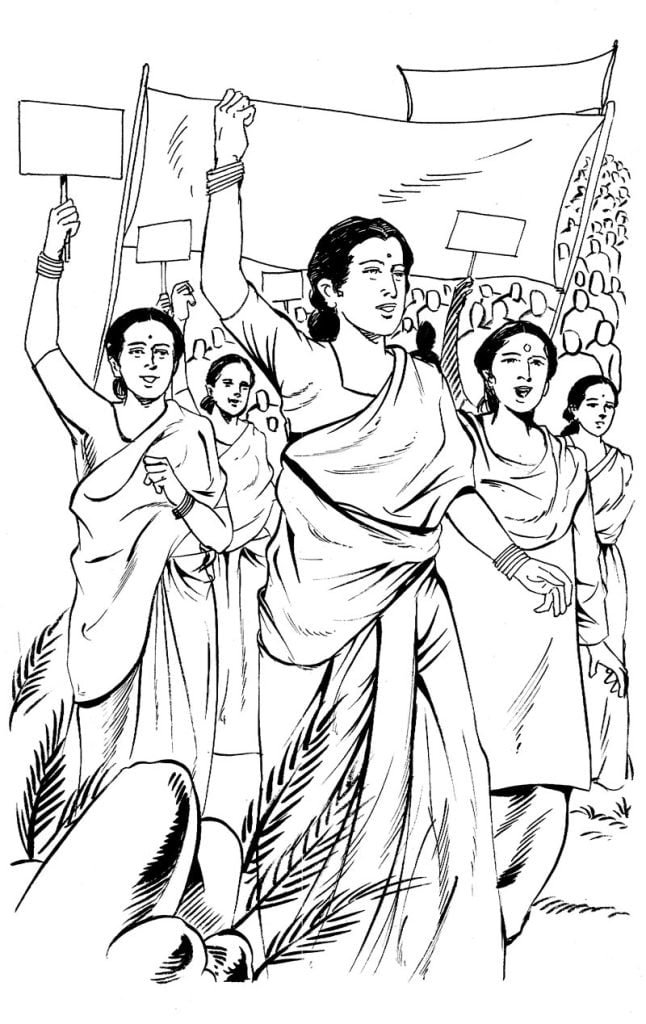In December, 1919 Montague-Chemsford suggested reforms were made into a law through an ordnance. It rocked the country and gave birth to ‘Khilafat’ movement.
The colonial rulers made up their minds to crush the movement by giving sweeping powers to the police.
A committee was formed under Justice Rawlett which suggested some draconian measures. The British got the provisions passed in the assembly and it came to be called as ‘Rawlett Act’.
The Act made possession of any material of subversive nature a treason. A judge could hear a political trial without jury.
The country exploded in anger.
Sarojini Naidu screamed, ‘‘This law is an example of the laws of tyranny and repression which can destroy the entire Indian nation like any doom’s day.”

She called upon Hindus and Muslims to rise against the black law together. She referred to the sacrifices made by Hazrat Imam Hussain and the imprisonment of Maulana Mohammad Ali.
She said, ‘‘Whenever a martyr sacrifices his life for the truth his faith attains immortality.’’
Rawlett Act was to come in force on 18th March, 1919. On 17th March a resolution was proposed in Madras (Chennai) before a huge public gathering—‘The citizens of Madras appeal to His Highness, the Viceroy and the government to atleast remove the clauses that impinge upon the basic principles of justice and human freedom and the fundamental rights upon which depend the entire nation and the defence of the state.’
Sarojini Naidu said, “Citizens of Madras. You may be wondering what gives me the right to put forward this proposal and to explain what my guru Mahatma Gandhi has said to you in respect of its meaning, objective and cause.
In far away Ahmadabad this selfless saint lives in a grass thatched hut, that small size guru has decided that tormented and terrorised India has only one weapon to pit against the tormentor. And that is spiritual protest. The spiritual power is mightier than the power of swords and machine guns…’’
Sarojini went to England in 1919 in the capacity of a member of Indian Home Rule League and presented India’s case before the Reforms Committee on the 6th August. In 1920 she spoke in a meeting organised by Maulana Mohammad Ali in the Kingsway Hall—‘Maulana has told you about the need of the sacrifice of life in the cause of the country. But I am not ready to die because I think that to live on in adversity requires higher and greater courage.’
Sarojini returned to India after touring through Sweden, Switzerland and France in 1921. In all those countries she espoused the cause of India.
She became frustrated with treacherous policies of the British that in anger she returned her ‘Kaisar-E-Hind’ title.
Sarojini gave a call to the youth, ‘You are new soldiers. Come and march with me to the temple of freedom. I hold the flag high. Keep marching until we don’t reach our goal, the temple of freedom.’
After the events of Jallianwalla Bagh, Rawlett Act, Martial Law in Punjab and Hunter Committee she had completely lost faith in the British.
So had Mahatma Gandhi.

In 1920, Gandhi mooted the idea of ‘Non-cooperation Movement’ against the government. The proposal was passed by majority vote inspite of opposition by some leaders. The Non-cooperation Movement gathered storm.
But in February, 1922 a violent incident of Chauri-Chaura forced Gandhi to suspend the movement. He wanted no violence. Still Gandhi was arrested and imprisoned for 6 years. He went in leaving the fate of the country in the hands of the liker of Sarojini.
Meanwhile Malabar suffered worst riots. The authorities brutally dealt with the crowds. Scores of women, children and old got hurt, maimed or killed. Sarojini Naidu severely condemned the act of the police. She accounted several incidents of barbaric deeds.
It angered the authorities. A notice was issued to Sarojini demanding an apology or face punishment for spreading canards. With the help of the Kerala Congress Committee she collected irrefutable evidence to prove her charges. She challenged the government to take back the notice or try her as threatened.
Even a photograph of a boy was produced whose hands had been chopped off.
Gandhi wrote to the Viceroy to gracefully accept the mistake. Meanwhile in his absence the Congress showed the signs of cracking up.
In 1924 Sarojini went on a tour of S. Africa as a representative of Mahatma Gandhi to preside over East Africa Indian Congress. She called upon the Indians to serve as a golden brown bridge between the blacks and the whites.
She returned home on 12th June 1924.

In her absence Gandhi’s health deteriorated. He was freed on health grounds. Before he could recover his health fully communal riots broke out in the country. To bring communal amity Gandhiji went on 21 day hunger strike.
On 25th April Sarojini Naidu toured Surat with Gandhiji. They appealed for communal harmony, use of khadi, charkha and boycott of foreign goods and liquor. Gandhi praised Sarojini for her role in achieving communal amity. He acknowledged the fact that Sarojini knew Muslims intimately.
Her oratory skills and leadership qualities were acknowledged by all.

